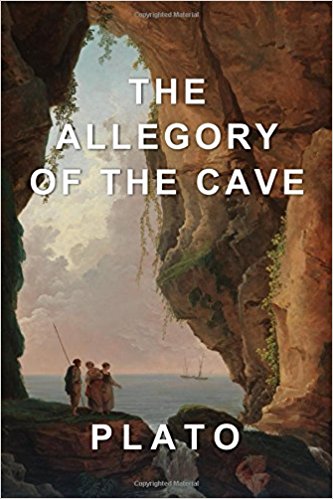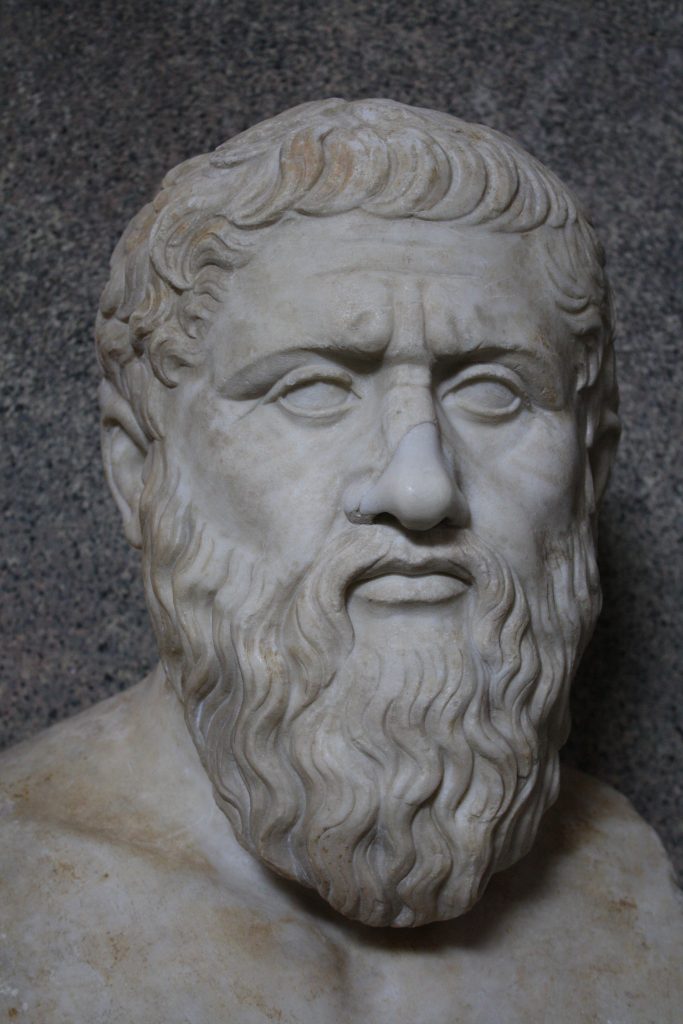The Allegory of the Cave Summary
5 min read ⌚
 The allegory is composed of a handful of signs and indications that describe the average mentality of an everyday person.
The allegory is composed of a handful of signs and indications that describe the average mentality of an everyday person.
The cave-world acts as a symbol of self-imposed imprisonment most people carry out.
Our book summary willingly joins the efforts to educate the population.
Who Should Read “The Allegory of the Cave”? And Why?
Sometimes the chains around our neck are too tight, impossible to break. What if we tell you, that the key to release yourself from bondage, is in your pocket.
“The Allegory of the Cave” is a story suitable for the entire world. We warmly recommended it to all people who want to change their own little world.

Plato Biography
Plato is one of those figures who needs no introduction, due to his achievements in the early stages of civilization.
He is the author of Symposium, The Republic, Apology, and others.
Plot
The renowned Greek Philosopher Plato attempted to dive deeper than anyone ever did before him– regarding the human nature.
He mainly focused on education and how the availability of it can produce a better person.
Step One: Conversation
The dialogue between Glaucon – Plato’s brother and Socrates is at the very center of happenings.
The symbolic part of the story is perhaps the most intriguing one. The allegory of a new philosophical journey starts with a simple question that is addressed to Glaucon.
To cut a long story short, Socrates asks Glaucon to create/imagine a cave where a group of people is imprisoned.
These individuals are locked since the day of their birth, without much room for exploring neither the cave nor the real world. Their neck and legs are fixated so that they cannot move around a lot.
The only thing they can do is to stare at the wall in front of them.
Behind this line, there is a raging fire, and between the prisoners and this fire, there is something similar to a sidewalk – raised above the ground.
The people walking down this road, carry puppets of humans and other creatures. In front of them, there is a low fence so that their appearance won’t cast a shadow for the inmates to see on their side of the wall.
The only thing they can actually witness is the shadows coming from the puppets these people carry.
As we mentioned, the prisoners are literally blinded to the outside world. The sounds these people make when passing by is their only amusement.
However, the prisoners believe that the voices and vibrations are coming from the shadows on the wall.
Socrates indicates that all prisoners are exposed to a different set of reality. Even though the shadows are merely reflecting the outer world, the inmates are not aware of it.
They are vulnerable to everything that is above their safety net – or a field of knowingness.
Step Two – Leaving the Cave
One of the prisoners is cut loose and sent to explore the real world. The first thing he sees is the fire behind him.
Nonetheless, the brightness of it damages his vision and hampers his perception. Poor eyesight weakens the visual perception of the objects on the wall.
As an illustration, if someone told this prisoner that his life was, in fact, a “fabricated reality” he would have gone crazy. Even freeing is not enough, when the mental boundaries are too strong and overwhelming.
9/10 prisoners would have returned to the cave – afraid of the freedom offered to them. This world, this safety and comfort zone is more than a home to them.
Their eyes won’t hurt anymore, because there is a wall that has been deeply missed.
Plato is persistent: “What if someone drags that person out or use force to bring him out in the open to see the sun and nature. At first, the prisoner would fight and act as though his house is robbed.
The beauty of the world scares him; he has never seen anything other but shadows.
Gradually, he begins to absorb the environment, his eyes adjust to everything including the sunlight, and he is much more comfortable right now. For years he was exposed only to shadows.
Now he has the privilege to see a human reflection in the water. A former prisoner is capable of laying eyes on a new world, filled with people, animals, plants, landscapes, and so on.
At night, he looks at the stars and the moon, an entirely new set of reality presents itself.
Step Three: Back to the cave
Plato doesn’t stop here:
The new man is now aware of the expansion revolving around this outside world. Taking into account all the information he has gathered; the freed prisoner no longer supports the “cave-reality.”
From such standpoint, he would pity all the other prisoners and craves to show them the effects of sunlight.
It’s evident that the superiority belongs to the perspective only one prisoner has been exposed to.
Now, the prisoner returns to visit his fellow inmates. His visual perception is now adapted to the new reality, but if he goes back to the cave, he’ll once again be in the midst of pain and agony.
The prisoners, however, who have never seen anything other than a shear wall, would conclude that if they engage in a similar journey, they’ll end up blind.
According to Plato, such reaction is normal, due to the fact the freed prisoner, will return to his blindness if he re-joins the cave-system.
Allegory of the Cave Epilogue
Each one has a story to tell, and all of us are exposed to a unique reality.
You don’t need us telling you why Symbolism has a prominent role in this allegorical story.
Sometimes, when people show us the better route, we fail to follow it, because of the “blindness” that is installed within our minds.
Socrates explains that the prisoners are prepared to kill anyone who drags them an inch out of the cave.
A comfort zone is a dangerous tool which can lead you to mental collapse!
Like this summary? We’d Like to invite you to download our free 12 min app, for more amazing summaries and audiobooks.
“Allegory of the Cave Quotes”
It is the task of the enlightened not only to ascend to learning and to see the good but to be willing to descend again to those prisoners and to share their troubles and their honors, whether they are worth having or not. And this they… Share on X True, how could they see anything but the shadows if they were never allowed to move their heads? Share on X How could they see anything but the shadows if they were never allowed to move their heads? Share on X Any one who has common sense will remember that the bewilderments of the eyes are of two kinds, and arise from two causes, either from coming out of the light or from going into the light. Share on XOur Critical Review
When Socrates and Plato combine, you cannot get anything lesser than a pure masterpiece.
The two great philosophers cover the psychological aspect of human decision-making.
Why do we agree to stay in the dark when there is light on the other side of the road?
Conduct a proper internal investigation and find your answers.
Emir is the Head of Marketing at 12min. In his spare time, he loves to meditate and play soccer.







